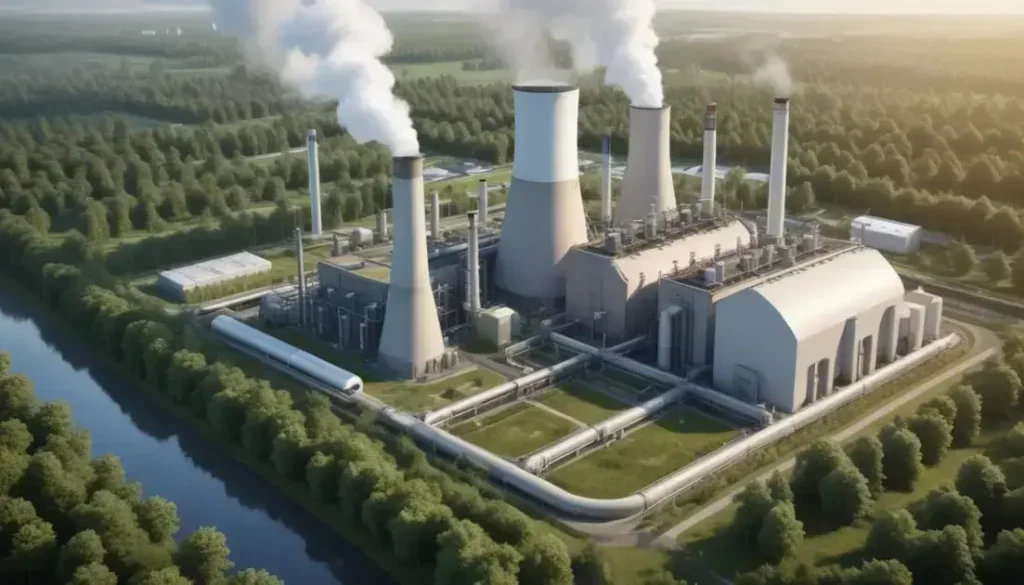Circular business models prioritize sustainability by minimizing waste through reuse and recycling, enabling companies to adapt to environmental challenges while enhancing profitability and consumer loyalty.
Are you aware of how circularity is transforming business landscapes? It’s essential for companies to adapt and embrace sustainable practices to thrive today. Let’s explore the implications of this shift and why it matters to you.
The rise of circularity in business
The rise of circularity in business has reshaped how companies operate in today’s economy. By promoting sustainable practices, businesses are moving away from the traditional “take, make, dispose” model and embracing a circular economy that emphasizes reuse and recycling.
Implementing circularity not only helps in reducing waste but also drives innovation. Companies are finding new ways to design products that can be easily disassembled and repurposed. This method not only conserves resources but also minimizes environmental impact, which is becoming increasingly important to consumers.
Benefits of Embracing Circularity: Organizations that adopt circular principles can see significant cost savings. By reusing materials, firms can lower their production expenses. Additionally, enhancing brand image through sustainability efforts can attract environmentally-conscious customers.
Moreover, regulatory pressures are pushing businesses towards circularity. Governments worldwide are introducing policies that encourage sustainable practices, making it essential for companies to adapt. Those who integrate these principles will likely remain competitive and align with future regulatory requirements.
Overall, the transition to a circular business model is not just an ethical choice; it’s a strategic necessity for long-term success in an increasingly eco-aware market.
Impact of tariffs on global supply chains
The impact of tariffs on global supply chains has become a profound concern for businesses across the world. As countries implement tariffs, companies face increased costs that can disrupt pricing strategies and overall profitability.
These tariffs create a ripple effect, influencing not just the importing and exporting countries but also their trading partners. When tariffs rise, firms may struggle to maintain competitive pricing, leading to reduced sales and market share. Supply chain adjustments become necessary as companies seek to mitigate these impacts by sourcing materials from different regions.
Furthermore, organizations often face delays as they adapt to new tariff structures. These adjustments can strain relationships with suppliers and customers, complicating logistics and fulfillment processes. The uncertainty around tariffs also makes planning more difficult, as businesses must navigate fluctuating costs.
In response to these challenges, companies are increasingly focusing on diversification of their supply chains. By exploring alternative markets and localizing production, firms can buffer against the volatility induced by changing tariff policies. Such strategies not only enhance resilience but also align with the growing consumer demand for local sourcing.
Consumer demand for sustainability
Consumer demand for sustainability has surged dramatically in recent years. As awareness of environmental issues grows, customers increasingly seek products and services that reflect their values. This shift is reshaping markets worldwide and pushing companies to adopt more sustainable practices.
Today’s consumers are more informed and are often willing to pay a premium for sustainable goods. They prioritize brands that demonstrate corporate social responsibility, engaging in transparent practices that highlight their commitment to the environment. This shift is not just a trend; it represents a fundamental change in purchasing behavior.
Businesses must adapt to this demand for sustainability to remain competitive. Companies are exploring eco-friendly packaging, renewable energy sources, and sustainable sourcing to attract eco-conscious consumers. Marketing strategies increasingly emphasize sustainability features to resonate with target audiences.
Additionally, the use of technology plays a significant role in meeting this demand. From apps that help consumers track their sustainability impacts to platforms that promote transparency in supply chains, innovation is key to engaging a more conscientious customer base. As sustainability becomes a core expectation rather than an option, businesses that prioritize these practices will likely thrive in the future.
How AI and robotics are reshaping circularity
How AI and robotics are reshaping circularity is a pivotal topic in today’s business landscape. The integration of artificial intelligence and robotics into the circular economy is driving efficiency and innovation. These technologies are enabling businesses to optimize resource use, thereby minimizing waste and enhancing sustainability.
AI plays a critical role in data analysis, helping companies predict and manage their inventory better. By leveraging predictive analytics, organizations can determine the optimal timing and quantities for resource use, reducing excess and waste. Furthermore, AI-powered tools assist in identifying potential areas for recycling and reusing materials within supply chains.
Robotics, on the other hand, facilitate automated processes that improve efficiency in waste management and recycling. Automated sorting systems can quickly separate recyclable materials, leading to higher recovery rates and lower contamination levels. This not only enhances operational efficiency but also significantly supports the goals of a circular economy.
Together, AI and robotics can transform traditional manufacturing and logistics practices into more sustainable models. As companies increasingly adopt these technologies, they can create closed-loop systems that contribute to economic and environmental benefits. The synergistic effects of AI and robotics are paving the way for a future where sustainability is at the core of business operations.
Revisiting business models through circular economy
Revisiting business models through circular economy is essential for companies aiming to thrive in an increasingly sustainable world. Traditional linear models, characterized by a “take, make, dispose” approach, are being challenged as businesses recognize the benefits of a circular economy.
In a circular economy, the focus shifts towards resource efficiency and waste reduction. This entails designing products that last longer and can be easily repaired, reused, or recycled. By adopting this mindset, businesses can cut costs and enhance their sustainability profile, appealing to environmentally conscious consumers.
Furthermore, companies are exploring new revenue streams by offering services rather than just products. For instance, leasing models allow consumers to use products without outright ownership, ensuring that companies retain control over their resources and can manage them sustainably.
Innovation plays a critical role in this transformation. Businesses must invest in new technologies and processes that support circular practices. This includes embracing digital solutions that track product lifecycle and optimize resource flow efficiently. By revisiting their business models to align with circular principles, companies not only contribute positively to the environment but also position themselves as leaders in the evolving marketplace.
The role of local supply chains
The role of local supply chains has gained significant importance in the context of sustainability and resilience. Local supply chains enable businesses to reduce their carbon footprint by minimizing transportation distances. This shift towards local sourcing not only supports environmental goals but also strengthens community ties.
One of the primary advantages of local supply chains is increased agility. Companies can respond more swiftly to market changes and consumer demands when their suppliers are nearby. This flexibility allows businesses to manage resources more efficiently, maintaining a competitive edge in the marketplace.
Moreover, local supply chains foster economic growth within communities. By sourcing materials and products locally, businesses contribute to job creation and help stimulate the local economy. This impacts the community positively, leading to enhanced consumer loyalty and support.
In addition to economic benefits, local supply chains enhance transparency and traceability. Consumers are increasingly concerned about the ethical implications of their purchases. By working with local suppliers, companies can provide clearer information about the origin of their products and the practices involved in their production.
Benefits of sustainability practices
Benefits of sustainability practices are becoming increasingly apparent to businesses across various sectors. Adopting sustainable practices leads to cost savings through improved efficiency. For instance, implementing energy-efficient technologies can lower utility bills and reduce resource consumption.
Moreover, sustainability attracts a growing number of consumers who prioritize environmentally friendly products. This shift in consumer behavior can enhance a company’s market competitiveness. Brands that actively engage in sustainable practices often witness increased customer loyalty and a stronger brand image.
Furthermore, integrating sustainability into business strategies can mitigate risks associated with regulatory compliance and environmental impact. By proactively addressing sustainability, companies can navigate potential legal challenges and reduce their environmental footprint.
Additionally, sustainability practices can foster innovation. Businesses are encouraged to explore new materials, processes, and technologies that align with eco-friendly principles. This not only improves products but can also open new markets, presenting fresh opportunities for growth.
Finally, the long-term outlook for sustainable practices is promising. Companies that invest in sustainability are better positioned for future challenges, ensuring resilience in changing economic and environmental landscapes.
Challenges in implementing circularity
Challenges in implementing circularity are significant and varied, impacting businesses seeking to adopt more sustainable practices. One major obstacle is the initial costs associated with transitioning to circular systems. Investing in new technologies and processes can be daunting for companies, especially smaller ones with limited budgets.
Another challenge is the complexity of redesigning supply chains. Shifting from a linear to a circular economy often involves re-evaluating existing supplier relationships and logistics. Businesses must find reliable partners who align with their sustainability goals, which can be a lengthy and complicated process.
Moreover, consumer awareness and education play crucial roles in this transition. Many consumers still prefer conventional products and may not understand the benefits of circular options. Businesses face the task of not only providing sustainable products but also effectively communicating their value to customers.
Additionally, regulatory frameworks can pose challenges. In some regions, outdated regulations do not support circular practices, making compliance difficult. Companies may need to advocate for policy changes to encourage sustainable practices across industries.
Lastly, measuring impact and success in circularity can be complex. Businesses need robust metrics to evaluate the effectiveness of their circular initiatives, which requires resources and expertise that may not always be readily available.
Future perspectives on circular business models
Future perspectives on circular business models are promising as more companies recognize the need for sustainable practices. As the world grapples with climate change and resource scarcity, circular models present a viable solution for businesses seeking resilience and adaptability. These models focus on closing the loop, ensuring that resources are reused and repurposed efficiently.
Innovative technologies are set to drive this transition. For instance, advancements in AI and IoT can optimize resource management, track materials through the supply chain, and enhance efficiency. This data-driven approach allows companies to make informed decisions that align with circular principles.
Consumer preferences are also evolving. Today’s buyers are increasingly aware of their environmental impact and often prefer brands that prioritize sustainability. This shift in demand creates opportunities for businesses to differentiate themselves by offering circular products and services.
Additionally, regulatory pressures are likely to intensify. Governments worldwide are implementing policies that encourage circularity, prompting businesses to rethink their operations and adopt sustainable practices. Companies that adapt to these changes early will likely gain a competitive advantage.
Collaboration will play a crucial role in the evolution of circular business models. Partnerships among businesses, NGOs, and governments can drive innovation and establish supportive ecosystems that promote circularity across sectors.
In Conclusion
The shift towards sustainability and circular business models is not just a trend but a necessity for the future. As businesses face new challenges from environmental concerns and consumer demands, embracing circularity offers a path toward resilience and growth.
By adopting innovative technologies and practices, companies can minimize waste, optimize resources, and build a loyal customer base. The potential benefits, from cost savings to enhanced brand reputation, are significant.
Collaboration among businesses, governments, and communities will be key in overcoming the challenges to implementing circular models. As we move forward, it is essential for businesses of all sizes to explore how they can contribute to a more sustainable and circular economy.
In this journey, the commitment to sustainability can unlock new opportunities and ensure a brighter, more sustainable future for everyone.
Frequently Asked Questions
What are circular business models?
Circular business models focus on reducing waste and making the most of resources by reusing, recycling, and regenerating products instead of following a traditional linear model.
How can my business benefit from adopting sustainability practices?
Adopting sustainability practices can lead to cost savings, increased consumer loyalty, and improved brand reputation while also contributing to environmental conservation.
What challenges might I face when implementing circularity?
Challenges include initial costs, redesigning supply chains, educating consumers about sustainability, regulatory pressures, and measuring the impact of circular initiatives.
Why is consumer awareness important for circularity?
Consumer awareness drives demand for sustainable products, making it essential for businesses to educate buyers about the benefits of circular options to succeed in the market.
What role does technology play in circular business models?
Technology, such as AI and IoT, enables better resource management, tracks materials in supply chains, and helps companies optimize their processes for sustainability.
How can businesses collaborate to promote circularity?
Businesses, governments, and NGOs can work together to create supportive ecosystems for sustainability, share best practices, and drive innovation in circular business models.


